“Everything we see hides another thing. We always want to see what is hidden by what we see.”
-Rene Magritte, Belgian painter
The entirety of Koyomimonogatari Episode 1 juxtaposes two things side by side to create another thing entirely – the modus operandi of Belgian surrealist painter Rene Magritte. Visual imagery throughout the episode reinforces the Magritte influence, the most obvious reference pictured above: one of his more famous paintings, The Son of Man. Present throughout the episode is the stone from The Castle of the Pyrenees, the red drapery from in The Human Condition (among other works), and cut-outs of a blue sky found in the likes of The Happy Donor.
Unlike many of his surrealist counterparts, Magritte was wholly focused on precise and realistic depictions of the objects and landscapes within the paintings themselves. The surreal, and often unsettling, part of his works came solely from the placement of these objects in certain settings. His oeuvre relied heavily on repetition of the mundane or average, with businessmen in bowler hats, his wife, and their apartment all featuring prominently in his works.
In a way, the Monogatari series and obvious Magritte references go hand in hand, as the former also loves playing with repetition in it’s visual imagery. Monogatari challenges its characters to confront their darkest fears, or monstrous parts of themselves all within a stark, modern setting. This contrast between the fantastic – shown in the myriad of oddities that Koyomi Araragi and company are tasked with tackling – and the everyday is a Monogatari constant.
The first episode of Koyomimonogatari focuses solely on the result of juxtaposing two mundane things together, and how it plays with individual perception and thought.
Koyomi Araragi often appears as a silhouette throughout all iterations of the series, with his trademark ahoge the standout visual cue that a shadow or being is Koyomi Araragi. Even the chapter titles in this episode show a round icon with an ahoge, symbolizing Araragi himself.
In Koyomimonogatari Episode 1, Araragi’s ahoge is replaced by a bowler hat, as he becomes the everyman of Magritte’s design. As it turns out, he is also partially responsible for the mystery of Koyomi Stone.
“The stone doesn’t look like a statue because of the shrine around it. The wooden junk looks like a shrine because there’s a stone in it. Both stop failing as their own objects.”
-Koyomi Araragi, Koyomimonogatari, Episode 1
This short episode tells the tale of Araragi’s woodworking project gone awry, discarded in a flowerbed around a stone. It’s then perceived as a shrine by passersby and given small offerings. Like a Magritte painting, the juxtaposition of two mundane things – a stone and a failed school project – create an entirely new thing: an enshrined stone that is the object of worship for unknown reasons. The punchline comes when Araragi destroys the “shrine” and takes a closer look at the stone itself, which turns out to be a piece of concrete. Monogatari as a series loves to play with perception, particularly how the audience perspective changes over time as new information is introduced and the series retreads characters’ individual emotional narratives. For this small, fairly self-contained story, Rene Magritte was a perfect fit while the series continues to fill in minute details and stays true to its own tradition.
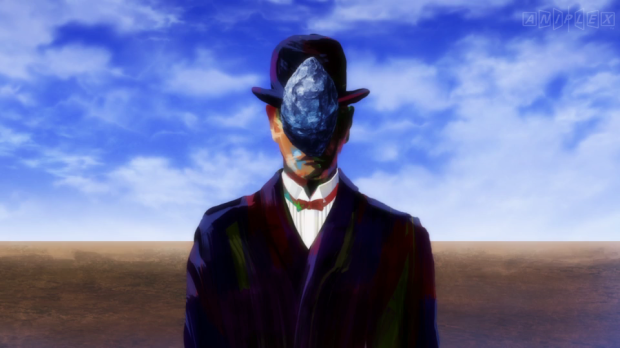

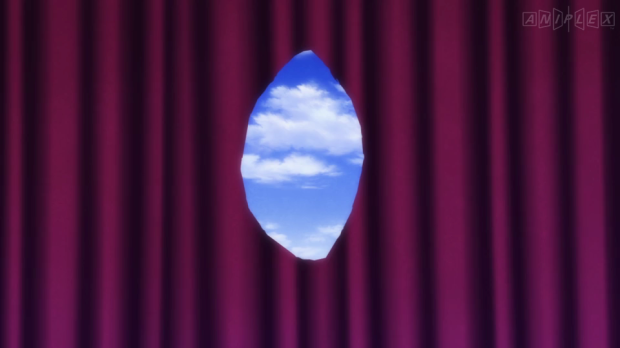
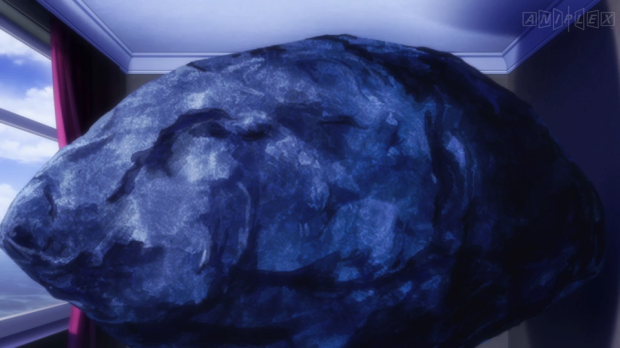
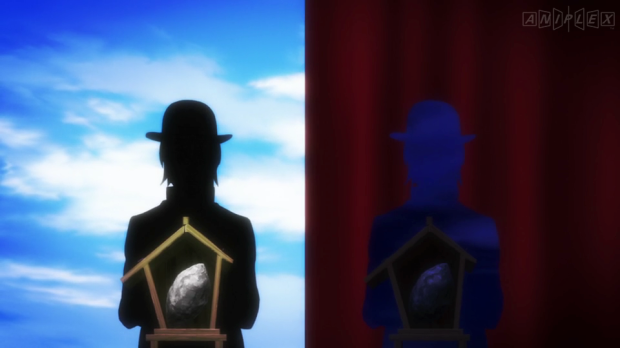
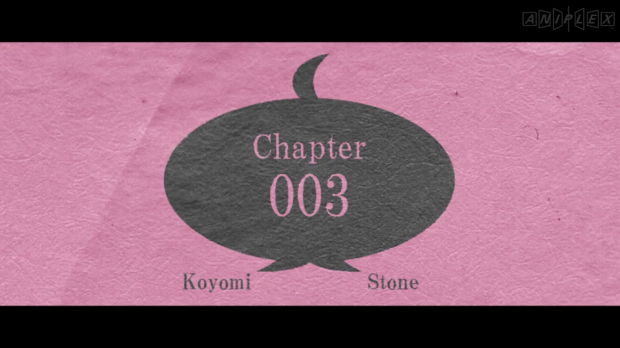



One comment